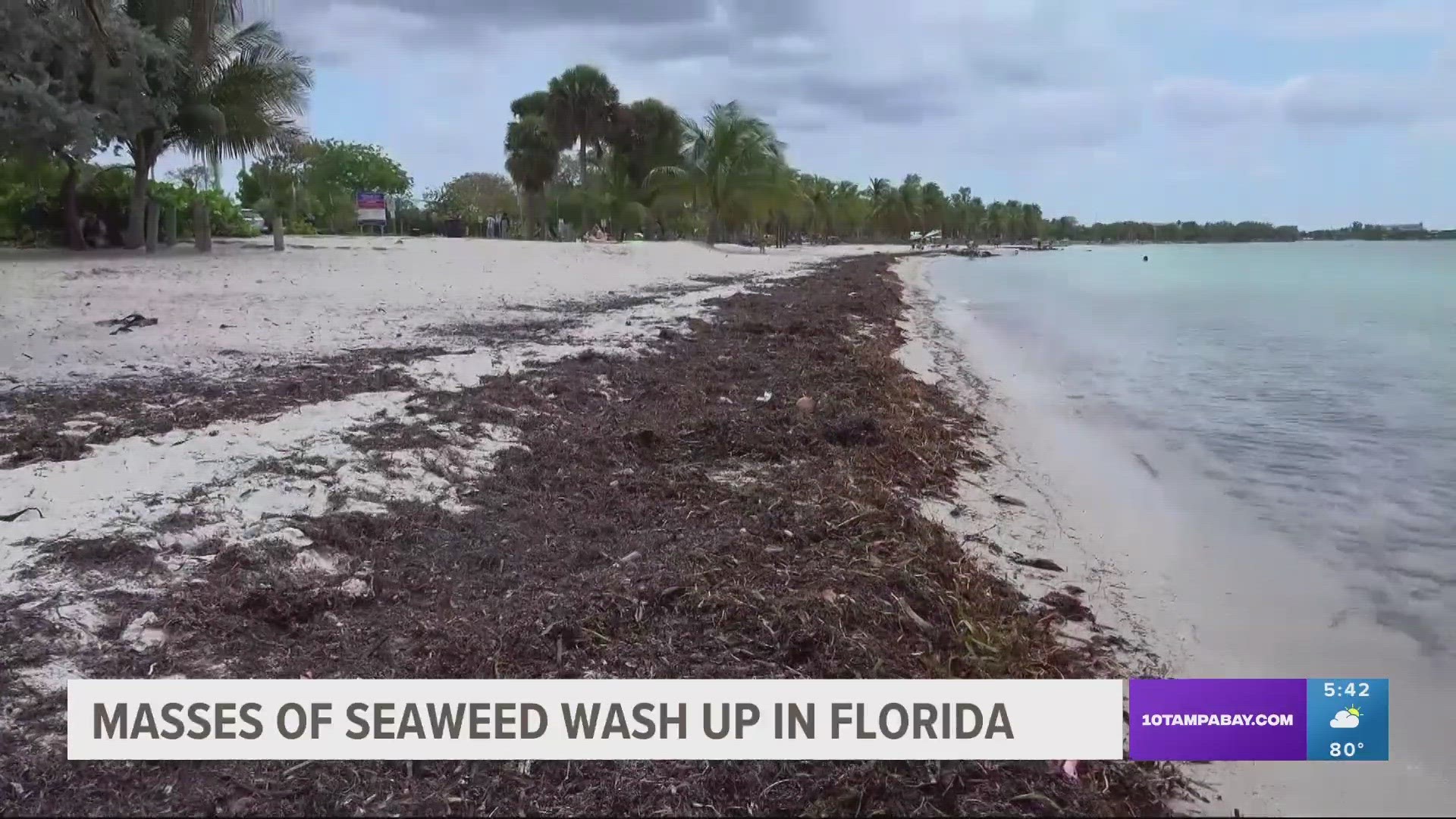MIAMI BEACH, Fla. — The colossal seaweed blob, drifting from the Atlantic Ocean, is starting to show up on some South Florida beaches. Researchers say it could stick around for months.
The clumps of brown seaweed, also called sargassum, are part of a massive bloom collecting in the Caribbean Sea spanning nearly 5,000 miles.
Oscar Vasquez, who has owned a Miami Beach condo for more than 20 years, told CBS News he's never seen anything like this before.
"There are parts of the beach where there's so much sargassum on the shoreline where it's undesirable and difficult to get into the water," Vasquez told the outlet.
Specialized tractors for raking up the brown weed clusters have been put to use but each morning, more seaweed returns. For now, beachgoers and neighbors close to the beach will have to deal with the foul odor the sargassum emits.
"While sargassum is a naturally occurring phenomenon, the extent of this year's sargassum bloom has caught the attention of scientists," CBS News reports. "The Great Atlantic Sargassum Belt swelled to an estimated 13.5 million metric tons of seaweed this year, and it could wash up on the beaches of Florida and the Caribbean in the coming months."
Local municipalities typically spend thousands of dollars trucking seaweed away to landfills, however, researchers at the University of Miami say there's a greener way to dispose of the smelly seaweed.
Helena Solo-Gabriele, a professor of environmental engineering, and Afeefa Abdool-Ghany, a graduate assistant, are working on a way to turn sargassum into an effective compost used as a plant fertilizer. Right now, a grant is pending to study why arsenic is present in sargassum. Read more about it here.
Along the west coast of Florida and most of Tampa Bay area beaches, the seaweed bloom won't likely have an impact.
That's because the seaweed will follow the Gulf Stream current, which moves around Cuba, past the Florida Keys and then makes its way around Miami and the east coast of Florida. It's those beaches where the seaweed will likely wash ashore.

